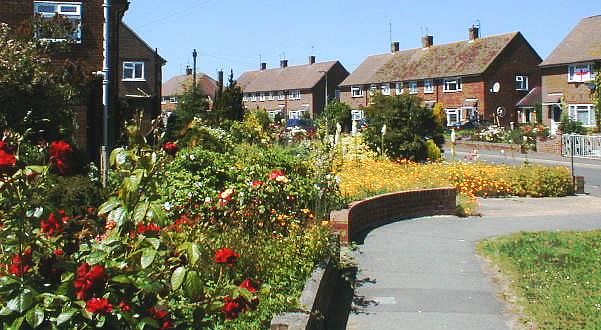Don’t Lose Your Heritage!
By Mary Smith
I am a relative newcomer to Rye and a keen, if inept, allotment holder. I would like to encourage other gardeners and would-be gardeners to become allotment holders.
When I first came to the town I was unaware that there were any allotments. I came across the Love Lane site by chance. (In mitigation, the Strand Quay site is not visible from the road and the Love Lane site is visible only from the footpath to Tillingham Avenue.)
The Borough Council minutes record that the first allotments for the people of Rye were set up in 1884, (Love Lane). The first list of allotment holders was given to the council in February 1885. In February 1886, the tenants petitioned the Council for a paling fence and gates, ‘this being necessary in consequence of the continual robbery and damage done in the gardens’. The council promptly acceded to their request. Allotment holding increased and the council provided more land. The OS map of 1929 shows an extensive area of land classified as allotment.
Two sites have remained in continuous use, in Love Lane and at Strand Quay, first established in 1893.
Readers of Rye’s Own may have memories of the allotments or photographs from the past. Many people would be fascinated to see and hear about them. Perhaps the editor would be willing to give space for them to share those memories with us.
The land was always attractive to speculative builders. Mr Ashenden was allowed to build houses on Fishmarket Road, on the present Strand Quay site, in 1903 and others were keen to follow suit.
The two sites were handed over to Rother District Council, subsequent to local government re-organisation, and although district councils are not allowed to control allotments, there they remain.
Rother District Council collects rents and supervises from afar. (It is interesting to note that the current grounds maintenance contract runs until 2009.) Allotment holding declined during the late 1960s, 1970s and 1980s and nothing was done to reverse this trend. Rye Council minutes had already expressed concern about the dereliction of the Love Lane site in March 1972 and planning applications were lodged for all areas.
Only recently has the Council advertised vacant plots, (at the instigation of the Allotments Association). I have only seen plots advertised in Rye Library and on the allotment gates. I suspect that many people in Rye are still unaware that the allotments exist.
Rye Allotments Association was formed, with the encouragement of Rye Town Council, in March 2003, by plot-holders on both sites. Members have acquired, transported, sited and repaired a secure storage container on the Love Lane allotments. Hedge planting on that site is in progress for security and to provide habitats for wildlife. The Association acted to defend the allotments at the Marina inquiry.
The Association’s future aim is for self-management, for the allotments to be run by and for the people who use them.
The Association has placed its own advertisements around Rye and will have a table at the Flower and Vegetable Show in the Community Centre on 3rd September. We allotment holders are keen for gardeners to know that the allotments are alive and thriving, but that plots are still available on both sites. We know that allotments are most at risk of development if they are unused.
We know that many people would love to grow food for themselves and their families. More and more people of all ages and from all backgrounds are turning to allotment gardening at a time when open spaces in the south-east are under threat from developers and house builders. Even long-standing allotments with statutory status can attract their unwelcome attention, as can be seen from the Marina application.
Supermarkets fly vegetables and fruit from all around the world and sell them in neat plastic trays, in and out of season. A variety of suppliers will have used a variety of chemicals in their production and a variety of unknown hands will have packed expensive salad leaves into little plastic bags.
Now many more people want to know how their food was grown. They know that mass produced food will never match the taste of their own freshly dug new potatoes, the first peas or a real home grown English strawberry.
There is satisfaction in sowing your own seeds and harvesting the results. Some people save seed for next year. There is fresh air, exercise, (for it is hard work), peace and relief from stress. The allotments are quiet and have long been havens for wildlife. Foxes and badgers visit. You could find lizards and slow worms and a green woodpecker just might decide to make a nest on your shed.
I would like to encourage would-be gardeners in Rye to join us.
Contact the Parks Department at Rother District Council on 01424 787571 or write to the Secretary of the Association, Barry Parkes, at 37, South Undercliffe, to arrange an informal visit.
“Rye’s Own” September 2005
All articles, photographs, films and drawings on this web site are World Copyright Protected. No reproduction for publication without prior arrangement. © World Copyright 2017 Cinque Ports Magazines Rye Ltd., Guinea Hall Lodge Sellindge TN25 6EG
